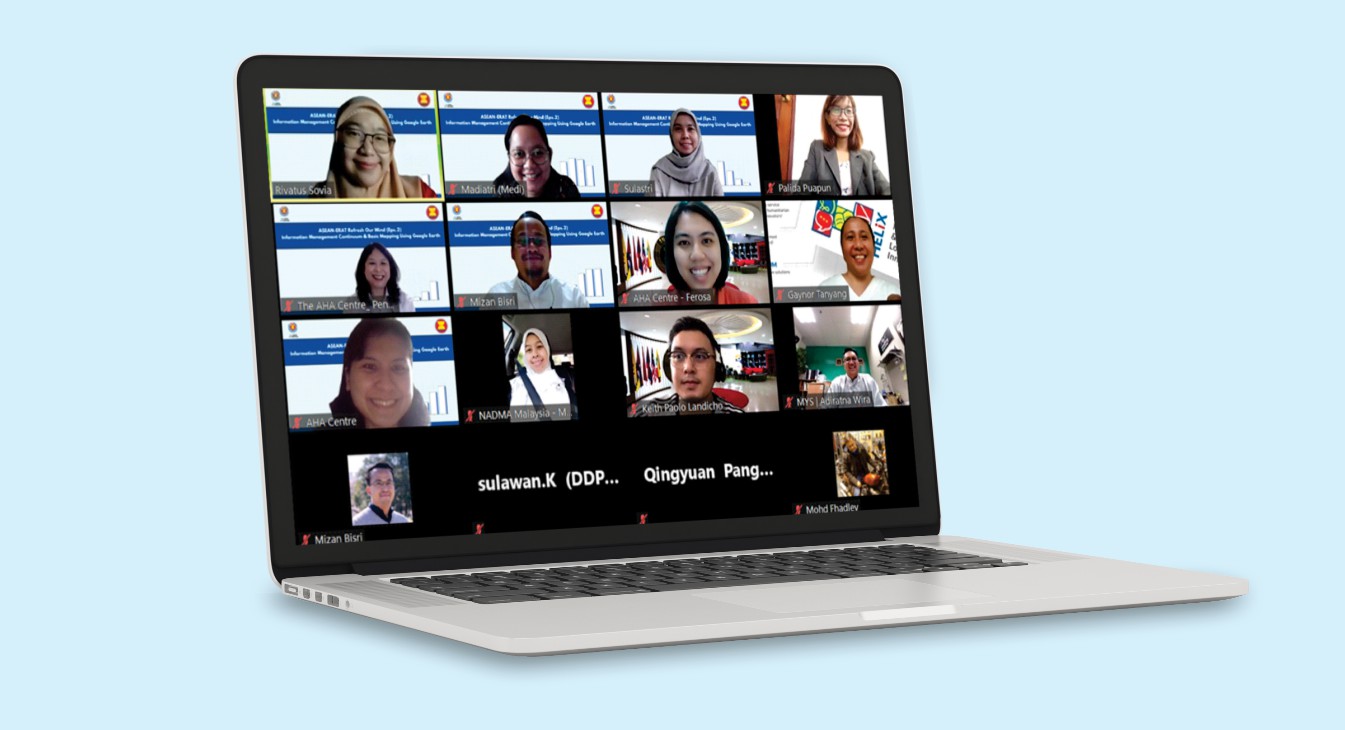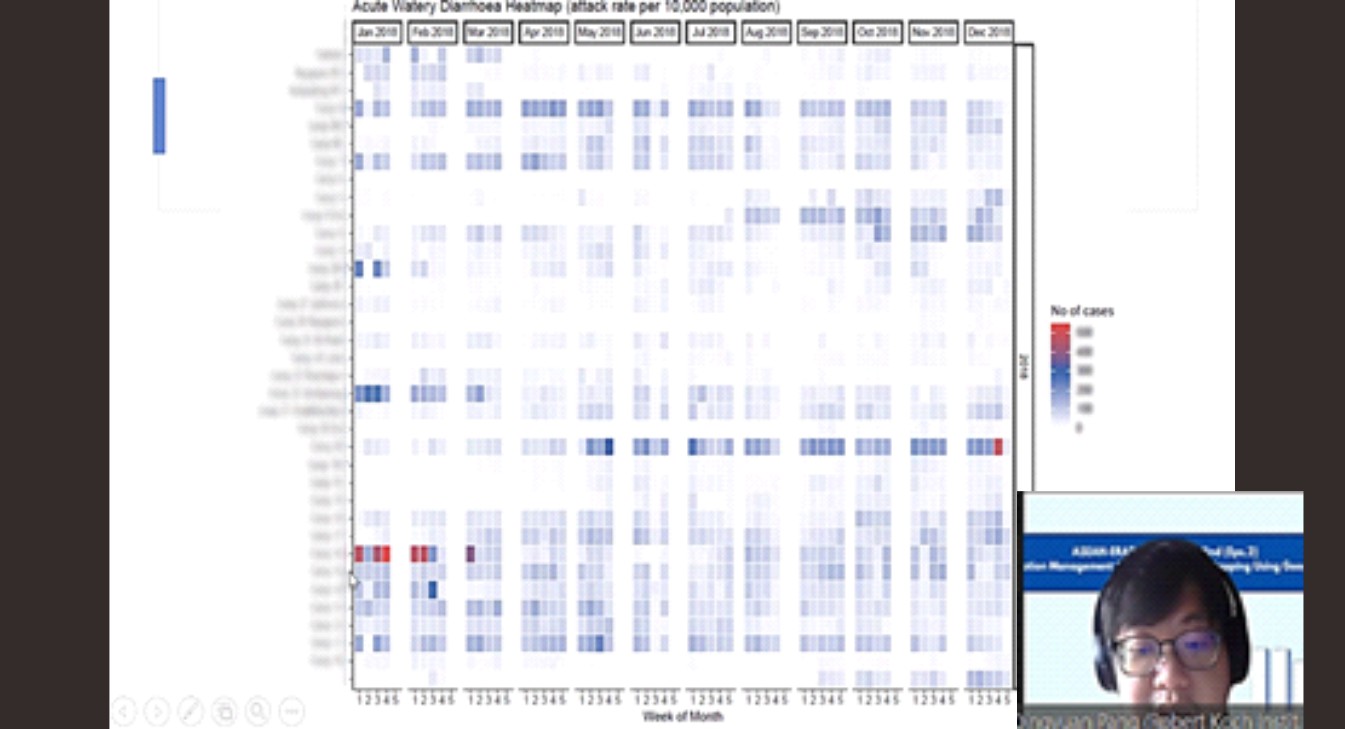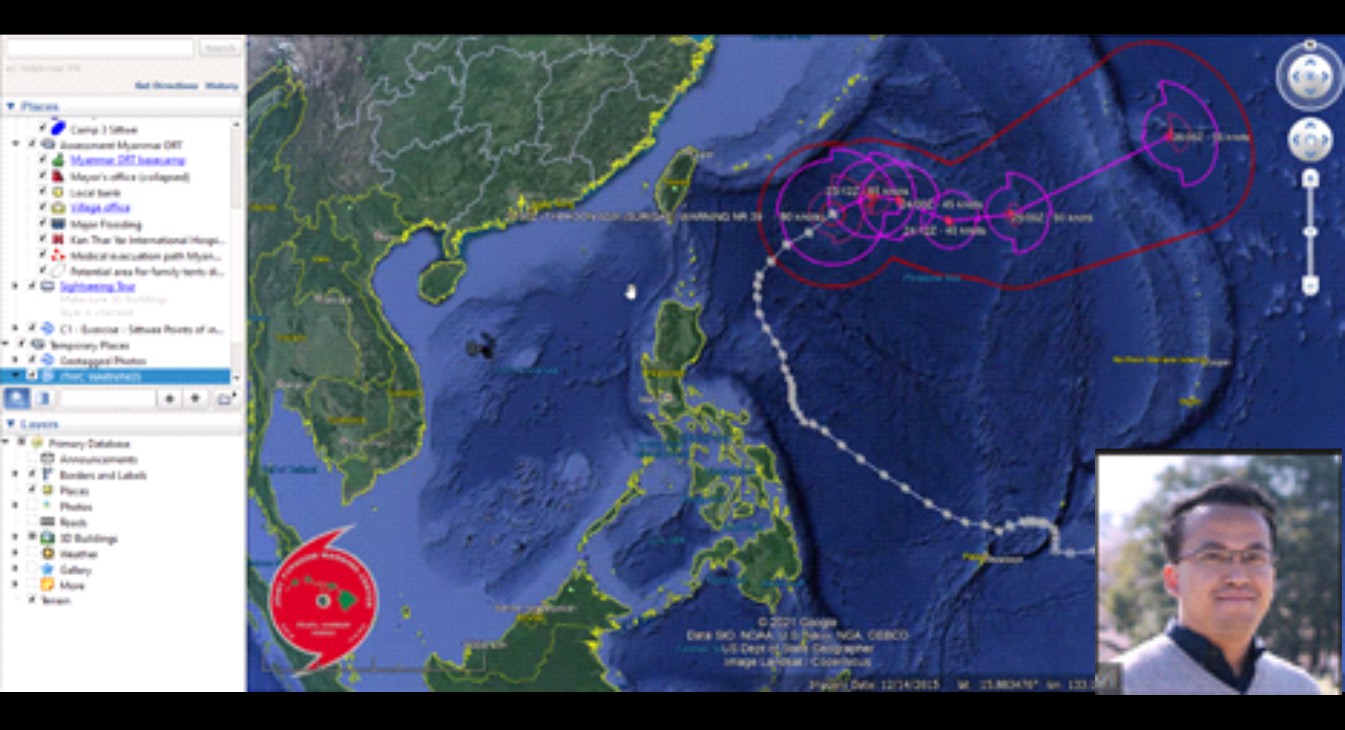
ASEAN-ERAT
REFRESH OUR MIND ON INFORMATION MANAGEMENT
In these days of ever-increasing remote working it is easy to become rusty, to lose the day-to-day contact and interaction with colleagues and fellow professionals who can keep us up to date with all the latest news and developments that allow us to remain at our sharpest in our respective fields of operations, and to miss out on tips and innovations that can facilitate our work.
With that in mind and based on positive feedback from the ASEAN Emergency Response and Assessment Team’s (ASEAN-ERAT) Refresh Our Mind series, which started in the early part of this year, the AHA Centre is continuing the series to keep ASEAN-ERAT members engaged and connected from their homes or offices during the course of the pandemic. The second edition of the ASEAN-ERAT Refresh Our Mind series helped ASEAN-ERAT members to brush up their knowledge on information management, often using simple, readily available and free-to-use software and open-source material, and all in only 100 minutes.
Before the second edition commenced, the AHA Centre introduced ASEAN-ERAT members who had registered for the event to the AHA Centre’s Learning Management System. The ASEAN-ERAT members took the opportunity to update their knowledge about the key aspects of the Information Management continuum and got an introduction to Google Earth by watching short videos. Then, the ASEAN-ERAT members met through a video call to continue their learning journey on the same topic by taking part in an interactive quiz and conversing through a group discussion. The group discussion flowed well with an informal atmosphere, allowing the ASEAN-ERAT members to enjoy their Friday afternoon with small talk while sipping their favourite drinks, or simply waiting to break the fast for those who observed Ramadhan.
The discussion heard from an ASEAN-ERAT member from Indonesia, Mr Mizan Bisri, a former officer at the AHA Centre under the Disaster Monitoring and Analysis Unit. Currently he is Assistant Professor in Disaster Management at Kobe University and is a founder of CARI, a web-based knowledge management platform for disaster management, and he described the use of Google Earth for basic mapping to quickly capture the most reliable and visual information for initial-stage disaster responses.
His explanation was corroborated by the experience of another ASEAN-ERAT member, Mr Qingyuan Pang, from Singapore, an epidemiologist with the World Health Organisation, working in Cox’s Bazaar. Before he joined WHO, Mr Pang was the Assistant Director of the Disaster Monitoring and Analysis Unit of the AHA Centre and he explained that he used Google Earth as it was faster and much less tedious than other mapping tools. He also cited heatmapping, the graphical representation of data where values are depicted as colours, as another tool to help him visualise data and monitor diarrhoea outbreaks in Cox’s Bazaar.
In addition to the extended discussion on data visualisation, he shared the humanitarian icons from UNOCHA with other ASEAN-ERAT members. Mr Adiratna Wira Adnan, Senior Assistant Director in the Technical and Infrastructure Department of Malaysia’s National Disaster Management Agency, suggested using the icons as the standard reference for all ASEAN-ERAT members.
The AHA Centre wrapped up the second edition of the ASEAN-ERAT Refresh Our Mind series with the announcement of the quiz winners and prizes for those who completed their self-refreshment through the ASEAN-ERAT Learning Management System. The winners were Ms Murni Mat Amin (Malaysia), Ms Gaynor Tanyang and Mr Irvin Miranda (the Philippines), and Mr Pang (Singapore). Congratulations to all the winners!
Written by: Madiatri A. Silalahi | Photo Credit : ERAT PMT



